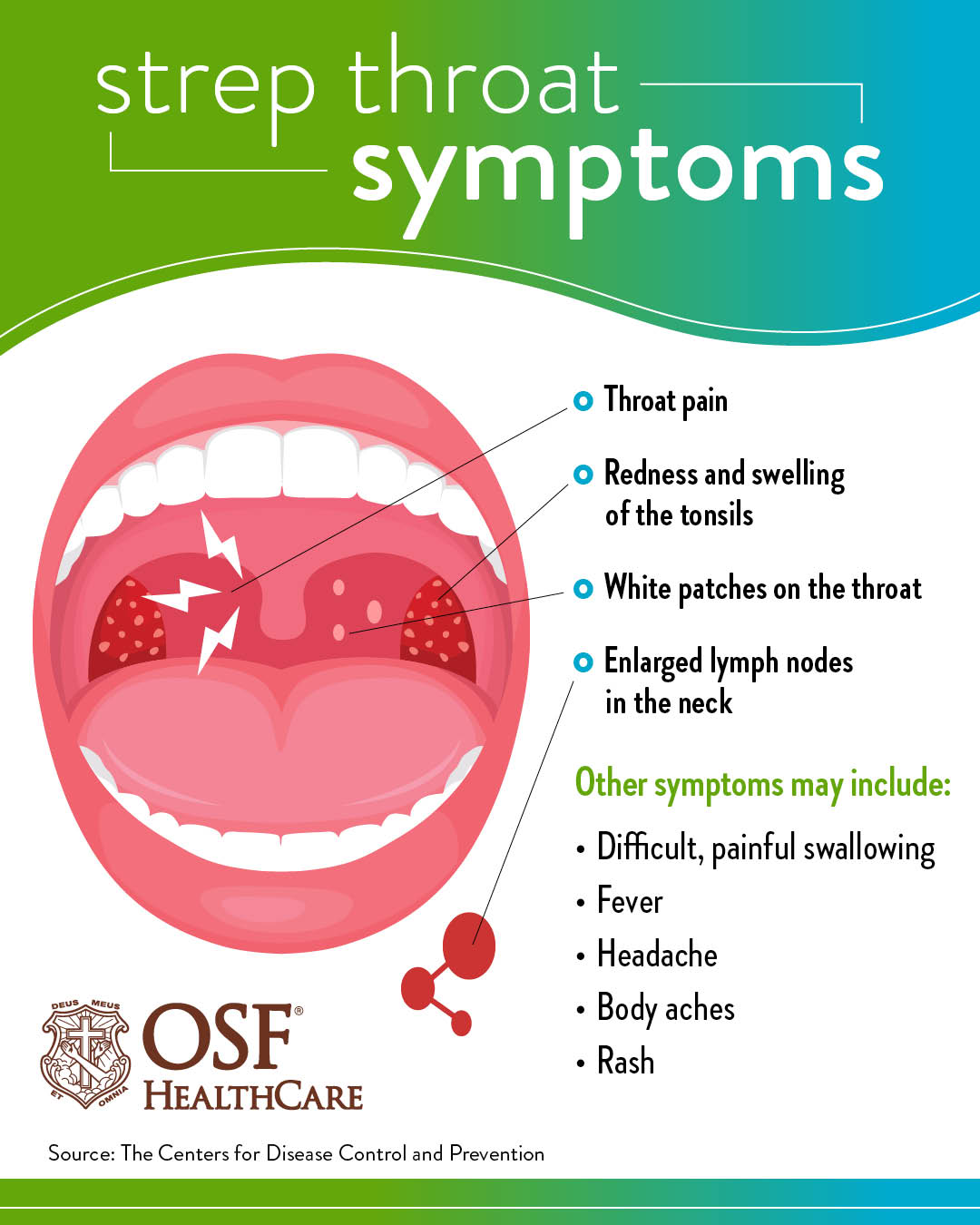
What to know about strep throat
Strep throat is a bacterial infection in the throat and tonsils. It happens when the pharynx and/or the tonsils are infected and inflamed.
There are many types of bacteria that cause infection. Group A streptococcus infection causes strep throat.
It’s highly contagious during the two to five days after you’re infected and before symptoms appear, according to Jake Mefford, PA, clinical director for OSF OnCall Urgent Care clinics.
“Washing your hands and disinfecting commonly used surfaces often can help slow or stop the spread of contagious germs,” Jake said.
Jake shared more answers to common questions about this infection:
Q. What does strep look like?
A. Your throat may look red, swollen or have white patches.
Q. What are strep throat symptoms?
A. Strep throat causes symptoms like cold, the flu and COVID-19. These are symptoms of strep:
Have a sore throat?
- Sore throat
- Fever (low-grade or high-grade)
- Headache
- Loss of appetite
- Not feeling well
- Nausea
- Vomiting
- Stomachaches
- Painful swallowing
- Redness or drainage in the throat
Q. Is strep contagious and how does it spread?
A. Strep throat is highly contagious. It spreads through droplets. These droplets can travel through the air after a cough or sneeze, or they can get stuck on surfaces when touched by something or someone carrying the germ.
Strep is highly contagious until the symptoms resolve.
Q. How is it different than a regular sore throat?
A. There are many different types of bacteria and viruses that can cause a sore throat. Many of the symptoms of these viruses and bacteria are the same. That’s why it’s good to get medical attention and get tested if you think you have strep.
A cough is not a common symptom with strep throat and may mean you have a different infection.
Q. How is strep diagnosed?
A. A provider examines your tonsils. They will probably give you a strep test, as well. The provider uses a soft swab to take a sample of fluid from the back of your throat. The sample can be checked right away. If the rapid test is negative, the throat culture is usually sent to a lab for a more thorough test. If you test positive, your provider will prescribe a treatment.
Q. How should strep be treated?
A. If you suspect you have strep, Jake recommends seeking medical attention.
Strep throat typically lasts three to five days if untreated. Despite the short duration, antibiotic treatment is recommended.
Antibiotics are often used to treat strep throat. Taking antibiotics reduces severity, shortens sick time, prevents complications and prevents the infection spreading to others.
Once you start taking prescribed antibiotics, your symptoms will likely go away in one to three days.
Some home remedies can help alleviate symptoms:
- Take ibuprofen and acetaminophen
- Stay hydrated
- Rest
- Eat soft foods
- Drink cold or warm beverages (honey should not be given to children less than 1 year old)
- Eat cold or frozen desserts such as popsicles, ice or hard candy (not recommended for children under 5 years old)
- Gargle warm salt water (1/2 teaspoon per 8 ounces of water)
Q. What are complications related to strep?
A. Most cases of strep throat resolve without complications. However, complications can include blood stream bacterial infections, abscesses in the tissue surrounding the throat, ear infections and sinus infections. Other complications following the initial strep throat infection include acute rheumatic fever, kidney issues and psychiatric disorders.
